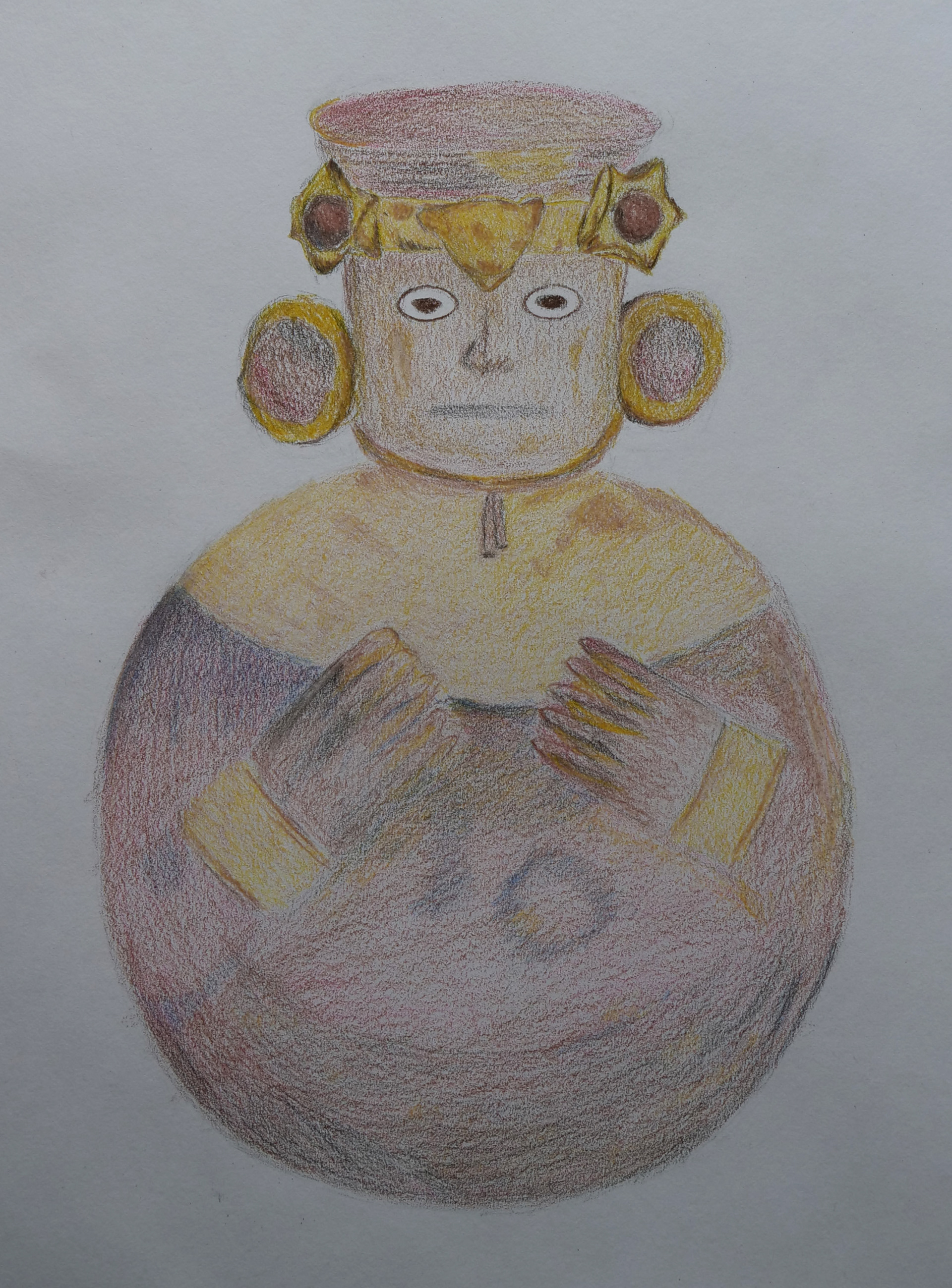This project looks at human imagination by the means of ethnographic objects, the interaction and transmission of these imaginaries through the act of drawing and visual analysis of ethnographic artefacts and how this process contributes to the existent images. Taking advantage of a certain context that I will further detail and echoing professor Rupert Cox, within a “multimodal” anthropological approach, I designed a set of workshops to take place over the summer of 2023 involving drawing pieces from the Manchester Museum as part of my primary fieldwork. This, in order to demonstrate how visual and sensory culture is deeply involved into the understanding and openness towards unreal worlds from different cultures. In this case, cultures that personally interest me as a Latin American currently based in the United Kingdom. I am personally a very skilled figurative drawer myself hence very familiar with techniques and what this activity means to me as a human being. For this project, my intention was to act as an observer of how other people draw.

young adults drawing at Manchester Museum

mature adults drawing at Manchester Museum

mature adults drawing at Manchester Museum

mature adults drawing at Manchester Museum

drawing of children drawing the Mochica and Nazca objects at Manchester Museum.

drawing of children drawing the Mochica and Nazca objects at Manchester Museum.

drawing of children drawing the Mochica and Nazca objects at Manchester Museum.

drawing of children drawing the Mochica and Nazca objects at Manchester Museum.

drawing of children drawing the Mochica and Nazca objects at Manchester Museum.

drawing of young adults drawing the Mochica and Nazca objects at Manchester Museum.
The invitation to draw these pieces was and is an invitation for participants and viewers, to see the objects instead of just looking and witnessing them, as Causey argues in his work to begin to “see in order to document an ethnographic experience requires active visual engagement” (2017:13), to examine these pieces and beyond. These enquiries will contemplate to include questions such as: Is the cultural transmissible through objects from one culture to another? Does the relation with the cultural and material production shape us and vice versa? And if so, are objects that are not present in our daily life but stored and displayed in a museum, inherent to our lives? Can artefacts be considered to be entities on their own? How much of these foreign objects can we really grasp and understand and how much is being lost in “translation”, by ignorance, cultural or psychological blindness? Through the process of drawing them, are we becoming able to perceive and see, feel, understand the same way the source community did? In other words, can we by virtue of drawing see as the Other saw?




In addition to questions that try to understand other imaginations product of different cultures and multiple ways of looking, seeing and being in the world, comes the question about the objects themselves being in a distant place, away from the source community. A considerable collection of these pieces from all around the globe are today exhibited or stored in European and North American museums, hence benefiting mostly the public that has access to those museums, but certainly not the people that made them nor their descendants, whose material culture has been taken away from them, part of their history and ancestors stripped. These issues are currently being discussed in the public arena, questioning the role and importance of museums. History is being reviewed together with the ethics surrounding the acquisition of these artefacts in many cases linked to colonial powers and events that took place in certain territories, episodes in which the empires and colonisers were the only benefited. The fact that these important cultural objects still remain in European museums continues to encourage more debates such as the traceability of how they got to the museum, what is the real story behind those collections? What do these objects represent to the nation that possesses them within their museum´s premises and for their immediate citizens? What do these objects represent to the source community?

Drawing of a contributor.

Drawing of a contributor.

Drawing of a contributor.

Drawing of a contributor.

Drawing of a contributor.

Drawing of a contributor.
